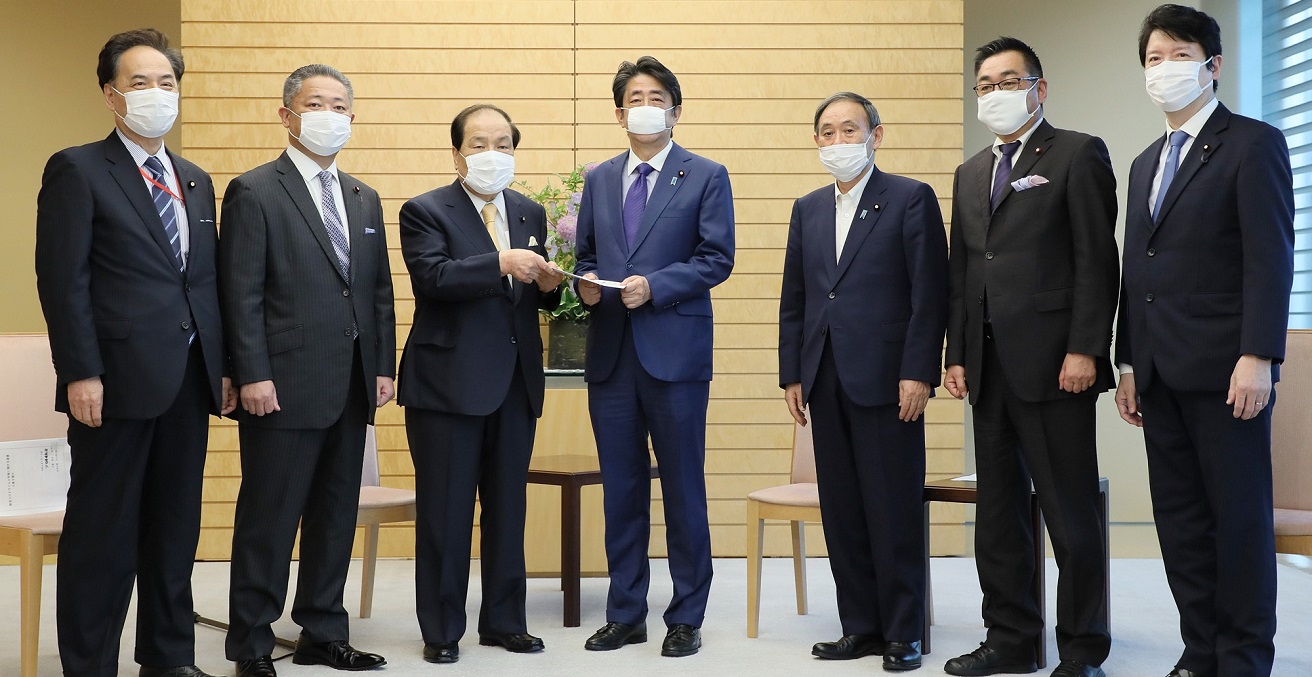The Shifting Sands Under Japan's Status Quo

Behind the appearance of seamless continuity, Japan’s general election contained enough surprises to suggest voters were looking for something different – where they could safely find it. The most striking result was the strong showing by a right-wing regional party centred on Osaka.
Earlier this year, with approval ratings for the cabinet of Suga Yoshihide sunk below 30 percent, due mainly to its mishandling of the pandemic response, the ruling Liberal Democratic Party (LDP) appeared headed for a drubbing at the polls. A last-minute change of leader to Kishida Fumio, a former long-serving foreign minister, however, enabled the party to avert that fate. Importantly, the LDP won enough seats – 261, a decrease of 15 – in the 31 October election to keep control of the standing committees of the Diet that manage the legislative process. Along with its coalition partner, the Komeito, whose seats increased by three to 32, the conservative government will have a big majority in the 465-seat House of Representatives.
Opposition stumbles
The main opposition, the centre-left Constitutional Democratic Party (CDP), was the biggest loser in the election, down 14 seats to 96. Brushing aside the misgivings of his trade union wing, party leader Edano Yukio decided to give voters a clear anti-LDP choice by joining four other opposition parties in fielding unity candidates in most single-seat constituencies. With North Korea helpfully lobbing missiles into the Sea of Japan during the campaign, the LDP found it easy to tar the grouping with a brush usually reserved for one its members, the Japan Communist Party (JCP). Unity candidates won just 59 of the 213 targeted districts. Edano immediately resigned to take responsibility.
Japanese voters are required to mark two ballots: one for a district candidate of their choice and one for a party. The party votes are counted in regional blocs to determine the allocation of 176 proportional seats in the Diet, providing an opportunity for some losers of head-to-head contests to return to parliament through the party list. The CDP actually managed to win an extra nine district contests, but the gain was more than offset by a bad result in the proportional vote. A notable example of a popular candidate able to overcome the drag of the party was Yoshida Harumi, a 49-year-old university lecturer – one of only 45 women elected – who defeated Ishihara Nobuteru, a former LDP secretary-general. Her district recorded the highest voter turnout in Tokyo.
Generational Change
Another LDP celebrity loser was 72-year-old Amari Akira, the first sitting secretary-general of the party ever to be ousted at the polls. Although resuscitated through the proportional system, he had no choice but to quit his party post. The opposition also suffered high-profile casualties, including the veteran politician Ozawa Ichiro (resuscitated through the proportional list) and CDP deputy leader and policy chief Tsujimoto Kiyomi (not resuscitated).
In pursuit of generational change, younger voters shifted the pendulum to the right, not the left. An Asahi Shimbun analysis found that parties of the left more often were favoured by older voters. Although the CDP had campaigned heavily on such hot-button issues as legal recognition of same-sex marriage, the under-40s gravitated to the LDP, preferring to trust its ability to manage the economy and create jobs.
“Innovation” on the right
The surprise packet of the election was the Osaka-based Japan Innovation Party (Nippon Ishin no Kai), which quadrupled its representation to become the third-largest party with 41 seats and a genuine force in the Diet. Staying outside the opposition grouping, Nippon Ishin scooped up the anti-LDP vote, plus a good measure of LDP support, in its home prefecture.
Nippon Ishin peddles a light and bright “youthful vigour” brand of right-wing populism – personified by the party’s deputy, the social media-savvy Osaka governor Yoshimura Hirofumi. Having shunned an alliance with the government, Nippon Ishin may prove both a demanding friend and a needling critic: on the one hand, pushing the LDP to go faster on constitutional revision and increased defence spending; and, on the other, giving encouragement to fiscal hawks in the bureaucracy who oppose Kishida’s income redistribution plan, dubbed “new capitalism.” When, following the election, the coalition met to discuss details of a proposed ¥40 trillion (US$350 billion) economic stimulus package, one item on the agenda was a handout for citizens hardest hit by the pandemic. The cash component settled on, however, will be smaller and the distribution more limited than the Komeito – always happier to spend on welfare than armaments – had wanted: an early crow perhaps for the “innovative” naysayers to the right?
The devil you know
If the administration can jumpstart the economy and successfully navigate an upper election due in mid-2022, Kishida should be safe for another two years at least. Enough time to shed his image as a puppet of LDP powerbrokers Abe Shinzo and Aso Taro, a perception that dampened initial public approval and fed speculation his tenure would be short. The choice of Motegi Toshimitsu to fill the vacant secretary-general role keeps a friend of Abe close to the throne, although Motegi’s replacement as foreign minister by Hayashi Yoshimasa – a well-credentialed appointee likely to take a careful approach to China – shows more of Kishida’s hand. Given that Hayashi has leadership ambitions of his own, the prime minister may have begun to put his mark on the succession.
The way ahead
Japan’s opposition has almost no chance of winning office while voter turnout stays around 55 percent. The last time the LDP was defeated, in 2009, it took a turnout of 69 percent. This means around 15 million eligible voters have retreated to the sidelines. Why? Mainly because they doubt the competency of the alternatives to the LDP. The CDP still suffers by association with the now-defunct Democratic Party of Japan, tossed out of office in 2012 after one term. Edano served as chief cabinet secretary in that administration during the Fukushima nuclear disaster, an event most people wish to forget. It displayed a lack of nous to keep him at the helm of the CDP for so long. The party’s choice of name – tying it to the single issue of resistance to constitutional revision – is another case of being worthy rather than appealing.
On the opposite side, Nippon Ishin is hemmed in by its narrow regional identity. It has also shown, during its brief existence, a tendency to lurch from boom to bust. As the COVID-19 threat recedes – an issue that won Nippon Ishin many votes – the party may find it has reached the top of the cycle. For its part, the LDP retained a number of seats after close-run contests with the united opposition. Where it met a nimble opponent, in Osaka, it was wiped out. The fact that three-quarters of LDP lower house members are embarking on a fourth term or more underscores the need for renewal. Prime Minister Kishida must navigate a narrow pathway, between assuaging an electorate still harbouring some desire to punish the ruling party and an LDP old guard intent on burnishing the somewhat dubious legacy of past administrations.
Update, 22nd of November: Following the election, the government unveiled a ¥55.7 trillion (US$490 billion) stimulus package, much bigger than had been anticipated by financial markets. The package includes a cash handout for citizens hardest hit by the pandemic, but in other respects conforms to traditional “pump-priming” methods. Based on the few details so far made public, it does not seem to attempt any radical reform of income distribution as between capital and labour.
Walter Hamilton was Tokyo-based correspondent for the Australian Broadcasting Corporation (ABC) for eleven years. He is the author of several books, including Children of the Occupation: Japan’s Untold Story (NewSouth, 2012/Rutgers University Press, 2013).
This article is published under a Creative Commons License and may be republished with attribution.





